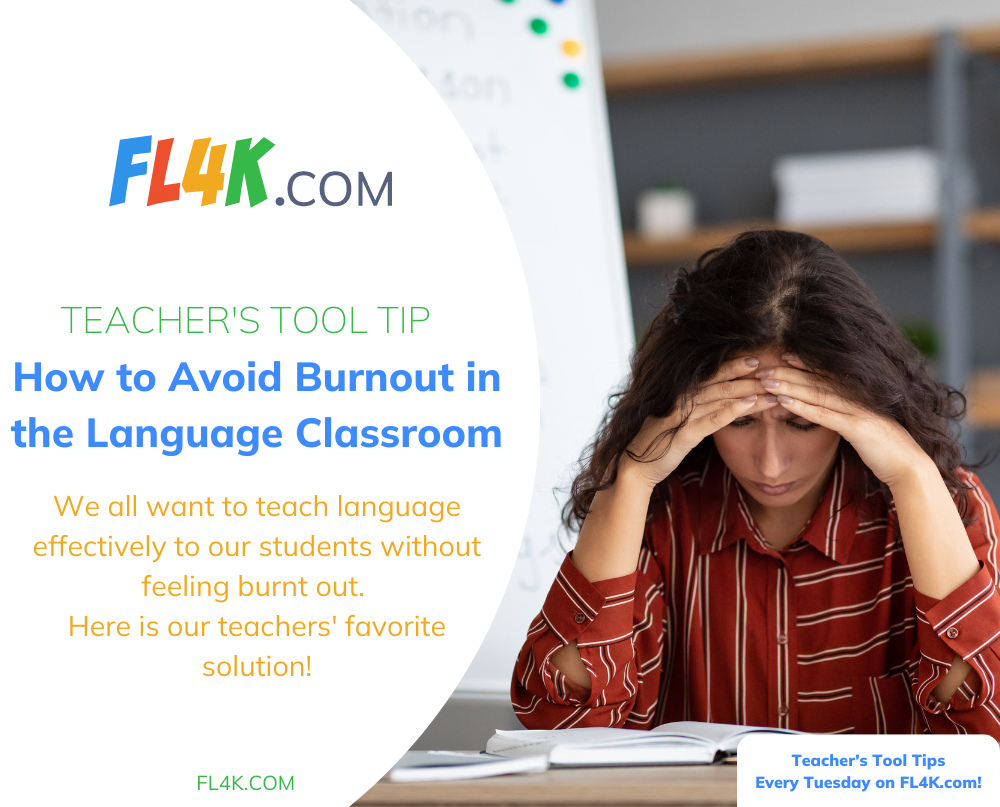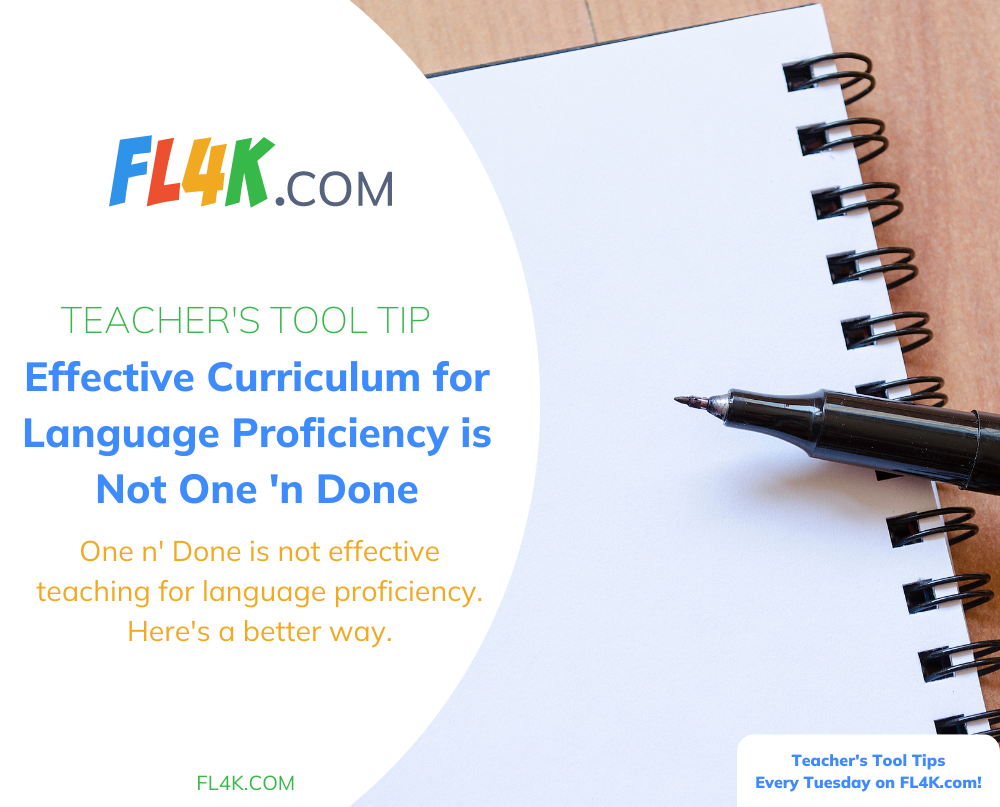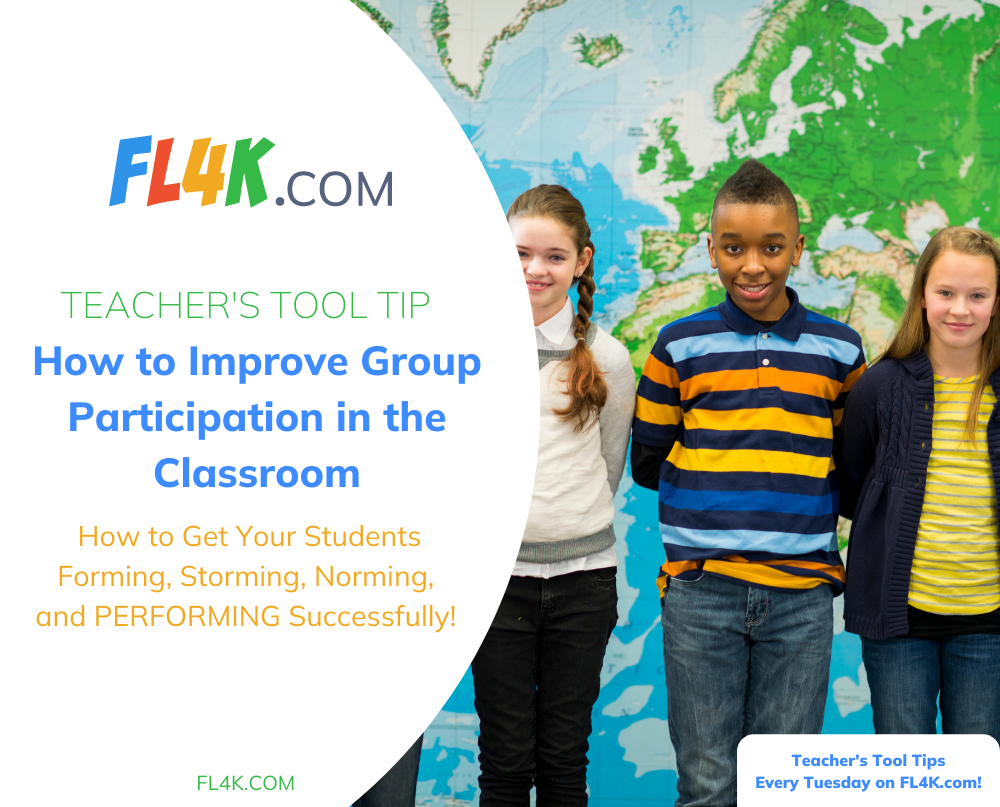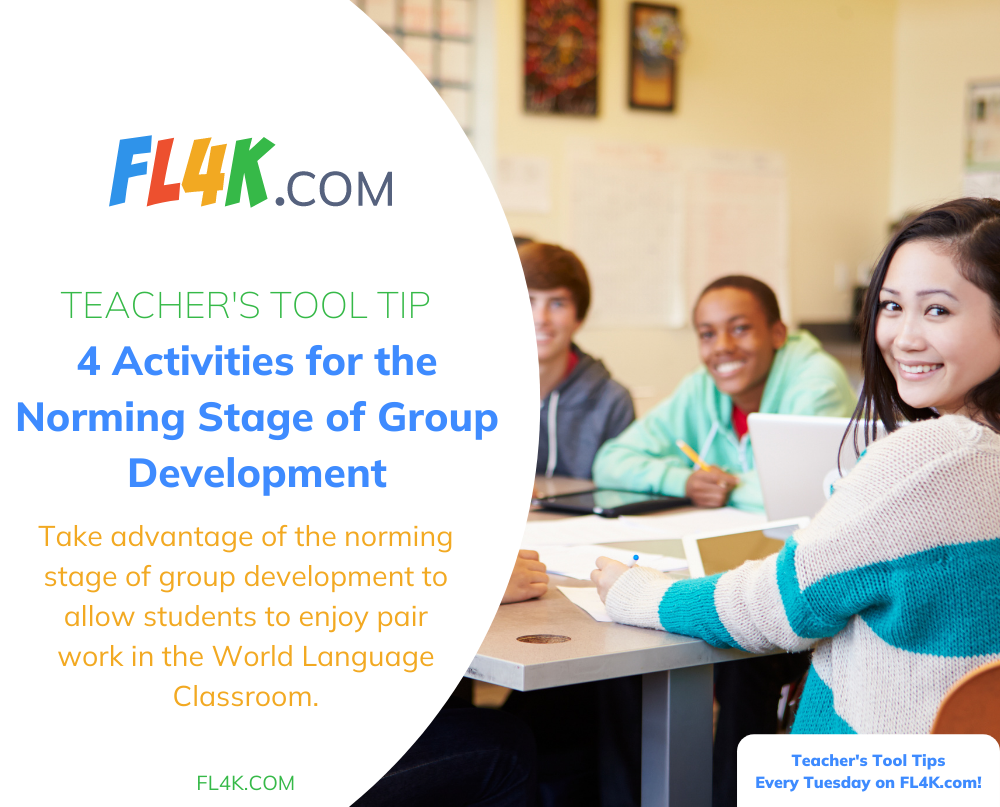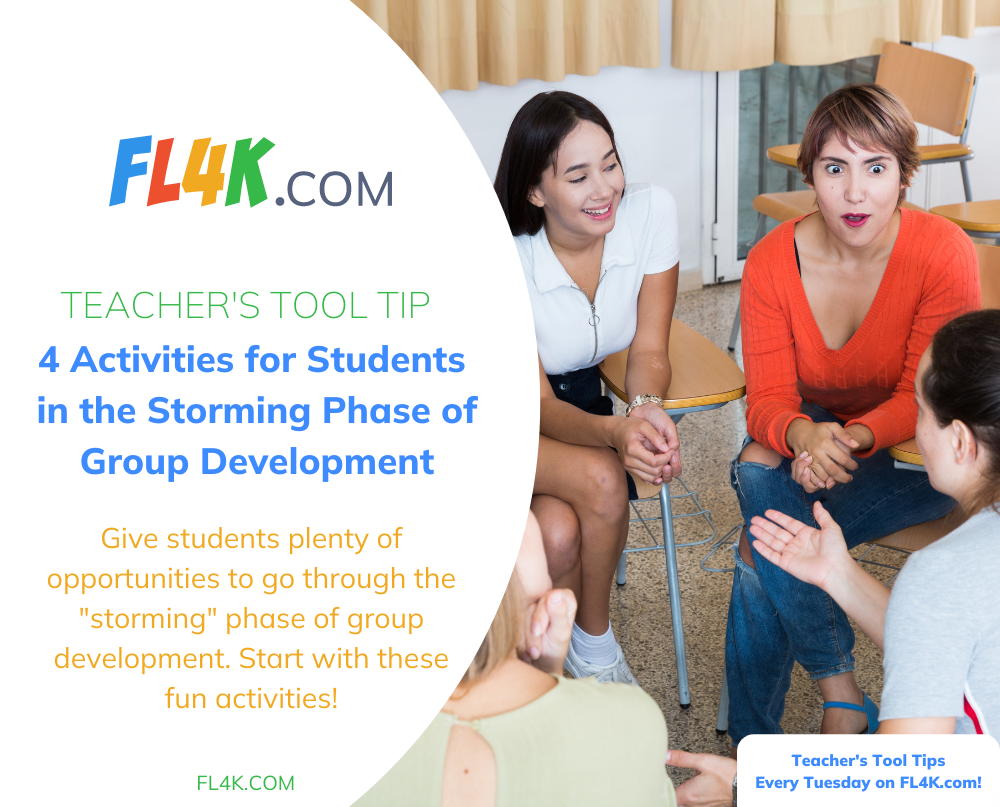Teacher Tooltip Tuesday: Avoid BURNOUT!
May seems like a good month to address the pernicious result of working nonstop for an entire school year without taking time to breathe: BURNOUT!
Why is burnout common in the World Language classroom?
According to the American Psychological Association, burnout is defined as “physical, emotional or mental exhaustion accompanied by decreased motivation, lowered performance, and negative attitudes towards oneself and others.”
Oh, dear! Our field is especially wrought with this kind of exhaustion because language teachers are among some of the most conscientious individuals I have ever known.
With 40+ years of experience in the profession, I have had the great privilege of knowing many world language teachers. Based on what I have seen, (literally dozens of colleagues at teaching levels from PK-college), our profession attracts a lot of earnest individuals with tremendous discipline, creativity, intelligence, perfectionism, perseverance, and great wonderment about the world! I consider myself blessed to have worked with so many incredibly gifted world language teachers.
But, guess what? With all this giftedness, comes a strong work ethic and the endless quest to teach our students to actually speak another language and yet, that goal can continually elude us.
We get to the end of the year and aren’t always happy with our results. So, we wipe the slate clean and try again next year, all the while feeling completely burned out from the effort.
Helpful resources for understanding burnout in our field
To get an idea of what we expect of ourselves to be effective world language teachers, peruse the Teacher Effectiveness for Language Learning (TELL) PROJECT this summer as professional development.
Take a look at the assessment tools and think about how you are doing according to what many professionals in the field have collaborated to define what effective world language teaching entails. I suggest looking at the Feedback Form Full Class Observation to see what criteria are important for best practices.
You may also want to look at the assessment tool for The Learning Experience. This will give you an idea of why our field attracts so many hardworking individuals.
Creating the best language experience without the burnout
Teaching a world language effectively is demanding! Here are just a few of the criteria for creating the best language experience for our students according to the TELL PROJECT:
- I provide opportunities for my students to become more effective communicators
- I provide opportunities for students to engage in cultural observation and analysis
- I provide opportunities for my students to acquire language in meaningful contexts
- I ensure that students receive comprehensible input.
How can we do all this without feeling burned out?
(Also to consider is the complication of the GEN Z student that is accustomed to the dopamine fix from instant and constant communication through social media. How can we compete with this phenomenon without ending up feeling burned out?)
There is no panacea, no magical formula, to inspire in our students a genuine desire to learn another language for real-world communication. We can share all kinds of data about the job market advantage, the excitement of being able to know people of other cultures through knowing their language, and the way language learning trains the brain for other higher functions, etc. The bottom line is that it takes a lot of expertise to teach another language in a way that motivates and excites students, and gets results!
It can definitely leave us all ending up feeling exhausted, unappreciated, and with a negative attitude about starting it all over again in September! BURNED OUT!
The solution
At FL4K, I am part of a teacher team writing curriculum for you!
We have personally experienced burnout and are doing everything we can to create a platform that supports teachers in their quest to be effective language teachers without burnout! We actually help you to provide the highlighted criteria above as deemed necessary for effective world language teaching according to the TELL Project!
It will cost you NOTHING to take a look and see what we have created for you!
One of the most exciting features of our curriculum is a full interculturality program that includes social-media-like posts about Hispanic culture with carefully scaffolded target language progression, amazing images, interactive polls in real-time for your students, discussion questions, songs, games, hands-on activities, and more!
Check this out to consider for your fall program. There are also some testimonials online that you can read. I, personally, met with a teacher in January who was completely overwhelmed with her teaching load from 1st-8th grade, and here is what she said after a few months of piloting our Fl4k program:
“Just wanted to check in with you all and let you know that everything is going awesomely with the program. The kids love it and my friends who are parents of the kids are amazed at how much Spanish they are speaking at home just having fun with it.”
Isn’t this what we all are looking for? A support program to help us fulfill our lofty goal as world language educators to have our students enthusiastic about and actually SPEAKING another language without BURNOUT!
I’ll be back next week with another tool tip! In the meantime, check out FL4K and take advantage of their free summer trial. Try out the entire program for free all summer long!
